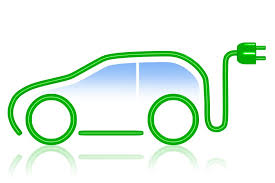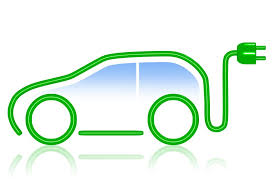
Major hindrances such as the largely unknown extent of the necessary metal reserves of United States and a selected few facilities to process minerals and produce batteries would hamper the plan of the country to set up its own electric vehicle supply chain according to industry analysts.
While those gaps are being attempted to be plugged through legislation that are currently in the process of being passed in the U.S. Congress, the leader in the global EV sector leader is still China. Many analysts feel that challenging the dominance of China would be a difficult task for the US.
“China has a huge head start,” said Gavin Montgomery, a battery and mining analyst at the Wood Mackenzie consultancy. “They’ve just been at this a lot longer than the rest of the world.”
In order to aid in streamlining permitting requirements for the development of mines for lithium, graphite and other EV minerals, the American Mineral Security Act was introduced earlier this month by the U.S. Senator Lisa Murkowski, chair of the Senate’s Energy and Natural Resources Committee. It would be heard before Murkowski’s committee for the first time. It essentially attempts to put into law an executive order passed by president Donald Trump on U.S. mineral development in late 2017.
“We have an opportunity here to move ourselves from this position of vulnerability in terms of reliance on others for our minerals, our EV supply chain,” said Murkowski, a Republican from Alaska.
However it is hard to guess just how much minerals such as cobalt and other minerals used for manufacturing of EVs and its batteries would be required in the US because there is very little national level data. According to USGS spokesman Alex Demas, corporate annual reports, historical data from the U.S. Bureau of Mines and other sources are the only means that the U.S. Geological Survey has to fall back for estimating the present levels of the minerals in the country.
It is both time consuming and costly to determine the actual mineral composition of a particular region because of the need for human resource and sophisticated equipment deployment in such regions. The new legislation being brought in by Murkowski would mandate conducting in-depth studies on the current status of reserve and its analysis of all of the minerals that are required in manufacturing of EVs throughout the US.
For example, currently data from the USGS show that the US has a total of about 35,000 tonnes of lithium reserves which many believes is a very conservative estimate.
This is so because, if the current USGS data is to be believed, just one company – the Albemarle Corp, which is currently the owner of the only US lithium mine, would be enough to deplete all of the US lithium reserves because the annual production capacity of the company is about 6,000 tonnes.
There is however some processing capacity available in the US. For example, lithium is processed domestically by Albemarle and its rival Livent Corp. Graphite is processed at the Louisiana facility of Syrah Resources Ltd after they ate are mined and shipped from Mozambique.
However analysts have noted a tendency among investors of refraining from funding new U.S. projects and those facilities named above are an exception and not the rule.
“Ultimately, these projects have to stack up economically, even if U.S. politicians make it easier to get permitting,” said WoodMac’s Montgomery.
(Source:www.thearabianpost.com)
While those gaps are being attempted to be plugged through legislation that are currently in the process of being passed in the U.S. Congress, the leader in the global EV sector leader is still China. Many analysts feel that challenging the dominance of China would be a difficult task for the US.
“China has a huge head start,” said Gavin Montgomery, a battery and mining analyst at the Wood Mackenzie consultancy. “They’ve just been at this a lot longer than the rest of the world.”
In order to aid in streamlining permitting requirements for the development of mines for lithium, graphite and other EV minerals, the American Mineral Security Act was introduced earlier this month by the U.S. Senator Lisa Murkowski, chair of the Senate’s Energy and Natural Resources Committee. It would be heard before Murkowski’s committee for the first time. It essentially attempts to put into law an executive order passed by president Donald Trump on U.S. mineral development in late 2017.
“We have an opportunity here to move ourselves from this position of vulnerability in terms of reliance on others for our minerals, our EV supply chain,” said Murkowski, a Republican from Alaska.
However it is hard to guess just how much minerals such as cobalt and other minerals used for manufacturing of EVs and its batteries would be required in the US because there is very little national level data. According to USGS spokesman Alex Demas, corporate annual reports, historical data from the U.S. Bureau of Mines and other sources are the only means that the U.S. Geological Survey has to fall back for estimating the present levels of the minerals in the country.
It is both time consuming and costly to determine the actual mineral composition of a particular region because of the need for human resource and sophisticated equipment deployment in such regions. The new legislation being brought in by Murkowski would mandate conducting in-depth studies on the current status of reserve and its analysis of all of the minerals that are required in manufacturing of EVs throughout the US.
For example, currently data from the USGS show that the US has a total of about 35,000 tonnes of lithium reserves which many believes is a very conservative estimate.
This is so because, if the current USGS data is to be believed, just one company – the Albemarle Corp, which is currently the owner of the only US lithium mine, would be enough to deplete all of the US lithium reserves because the annual production capacity of the company is about 6,000 tonnes.
There is however some processing capacity available in the US. For example, lithium is processed domestically by Albemarle and its rival Livent Corp. Graphite is processed at the Louisiana facility of Syrah Resources Ltd after they ate are mined and shipped from Mozambique.
However analysts have noted a tendency among investors of refraining from funding new U.S. projects and those facilities named above are an exception and not the rule.
“Ultimately, these projects have to stack up economically, even if U.S. politicians make it easier to get permitting,” said WoodMac’s Montgomery.
(Source:www.thearabianpost.com)





